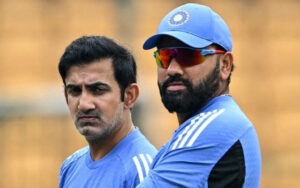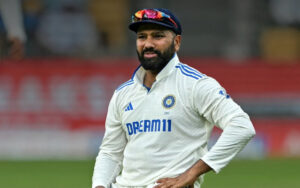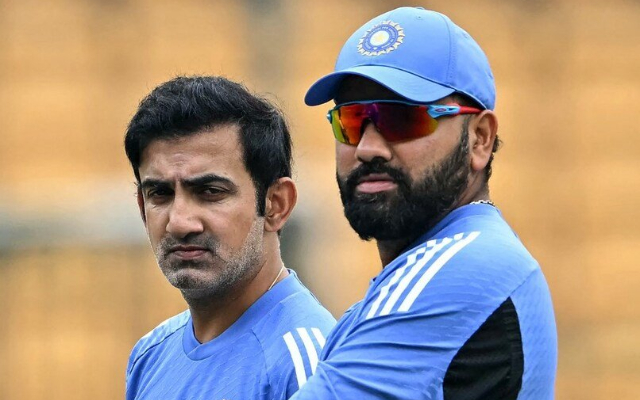
Subhayan Chakrabarty in Pune
India’s journey to qualify for the World Test Championship is currently precarious, with the future participation of veteran players like Rohit Sharma and Ravichandran Ashwin in doubt due to potential retirements. Their departure could usher in a challenging era of transition for the Indian cricket team. But who are the potential replacements of some of the senior-most players of the Indian team – Rohit, Virat Kohli, Ashwin, Ravindra Jadeja and Mohammed Shami – when the time comes for them to bid adieu to the longest format?
The likelihood of Rohit Sharma continuing through another WTC cycle seems slim, given his age. Similarly, Ashwin, who would be 41, is also likely to step back. Kohli is 35, Jadeja is 35 and Shami is 34 and the Indian team management should start grooming their replacements in the future in a bid to ensure a smoother transition.
Batting options like Yashasvi Jaiswal, Abhimanyu Easwaran, Ruturaj Gaikwad, and B Sai Sudharsan provide some optimism on the batting front.
The depth in bowling isn’t exactly thin but could be labelled as ‘raw’. Avesh Khan, Yash Dayal, Prasidh Krishna, Harshit Rana, Vidwath Kaverappa, Khaleel Ahmed are some names who are being looked as potential options for the Indian pace attack in the future with Harshit and Prasidh even being part of India’s squad for the tour of Australia. The likes of Yudhvir Singh Charak, Gurjapneet Singh, Vaibhav Arora, Anshul Kamboj are few other options but they need to perform consistently at the domestic level.
For the Latest Sports News: Click Here

India may have found a replacement for Hardik Pandya in Test cricket in Nitish Kumar Reddy, who is also part of India’s squad for Australia series, but he is still an unproven product in international circuits. While he has a terrific record in age-group cricket and looks like a special talent, he has just played 21 FC matches and will have to maintain his fitness levels when he becomes a regular in the Indian team.
In batting, Yashasvi Jaiswal has claimed an opener’s spot, and with Rohit Sharma’s retirement anticipated soon after the WTC Final, Abhimanyu Easwaran, Ruturaj Gaikwad, and Sai Sudarsan are in contention. Yet, each brings different challenges; Easwaran’s reputation for underperforming in high-pressure scenarios versus his impressive domestic record, Gaikwad’s flair in limited-overs cricket contrasted with his modest first-class stats, and Sudharsan’s potential to adapt across formats. Out of all, Sudarshan passes the eye test in red-ball cricket best but will have to prove himself in India colours when he gets the chance.
For Kohli’s coveted number four position, Devdutt Padikkal offers a stylish option. Sarfaraz Khan has shown promise but his adaptability across various conditions awaits validation. Rinku Singh, known more for his T20 finishing, has the stats, average of 54 in FC, but selectors need to show faith in him for red-ball cricket.
In spin, Axar Patel fits well on turning tracks but, unlike Jadeja, might struggle elsewhere. Youngsters like Musheer Khan and Manav Suthar are potential future stars, though their development is ongoing. Washington Sundar stands out as a viable all-rounder option post the Ashwin-Jadeja era, with Tanush Kotian and Saransh Jain possibly following in Ashwin’s footsteps, though they would have to play more shadow tours to ensure a smoother transition.
While the Gautam Gambhir-led team management and Ajit Agarkar-led selection committee have plenty of options to replace the ageing icons of the game, they would have ensure that the younger names get to start their international careers on home soil rather than throwing them under the cosh in alien overseas conditions.
Also Read: A week of dreams for New Zealand cricket




